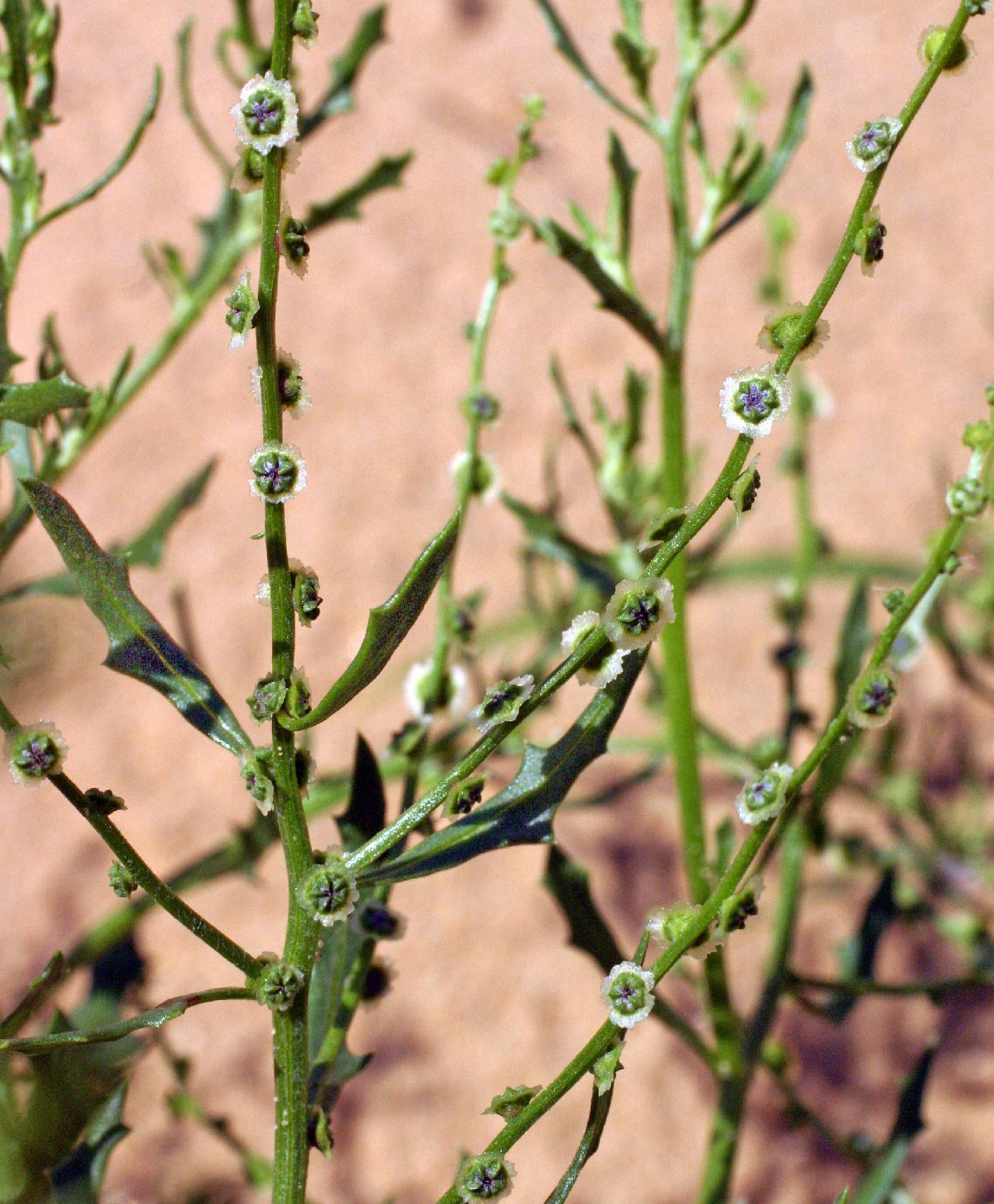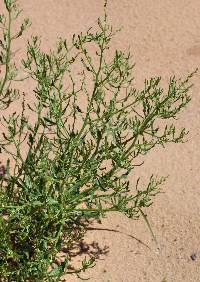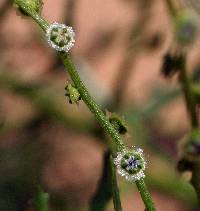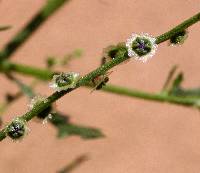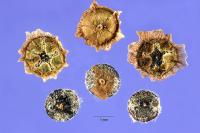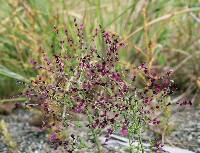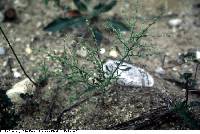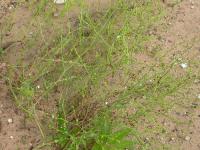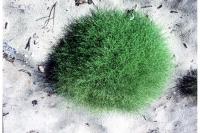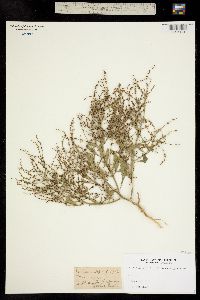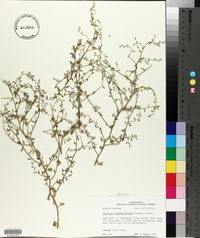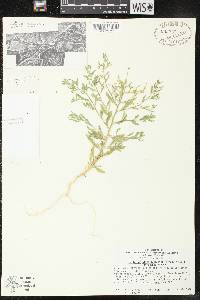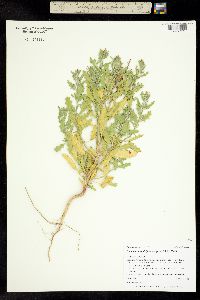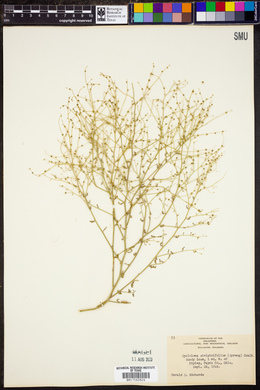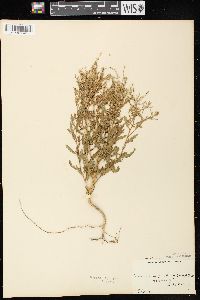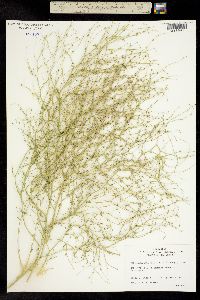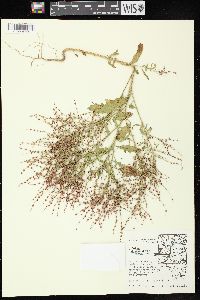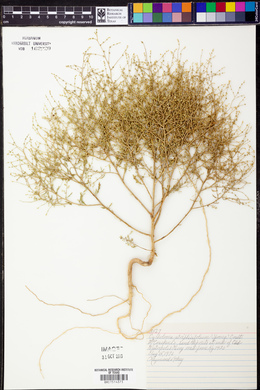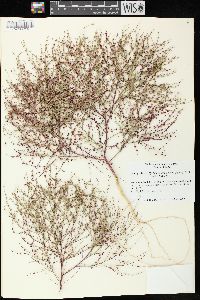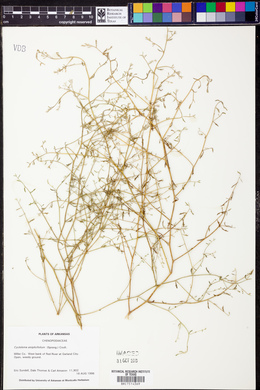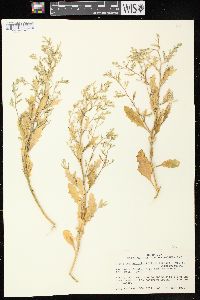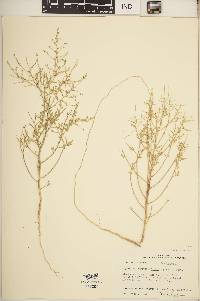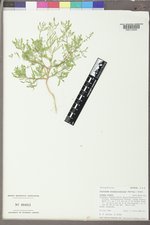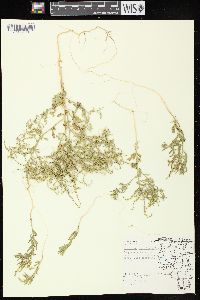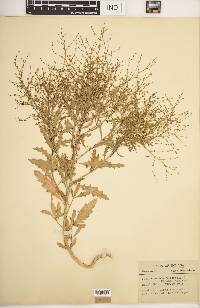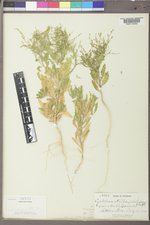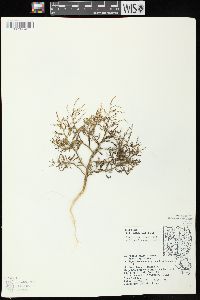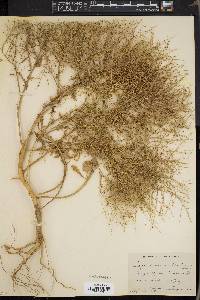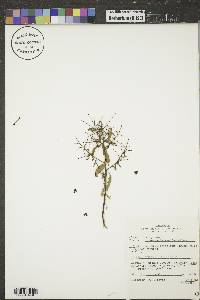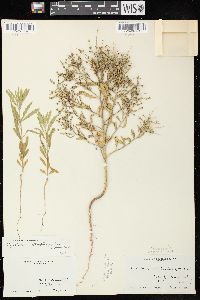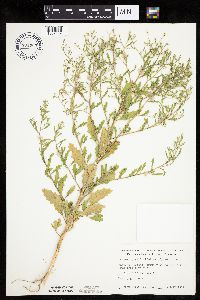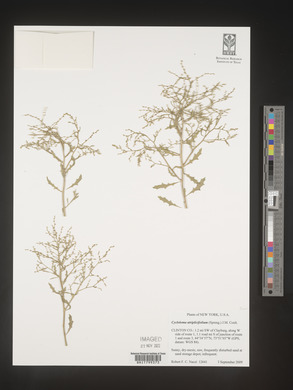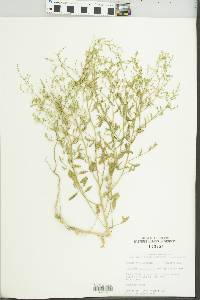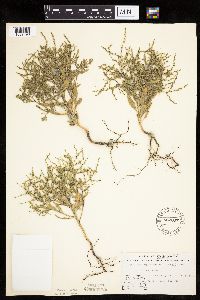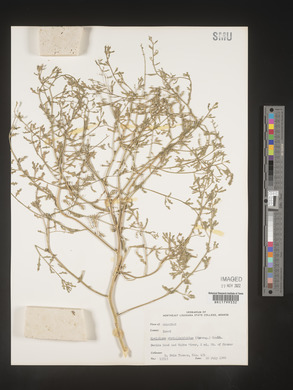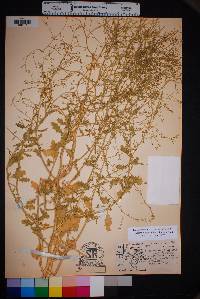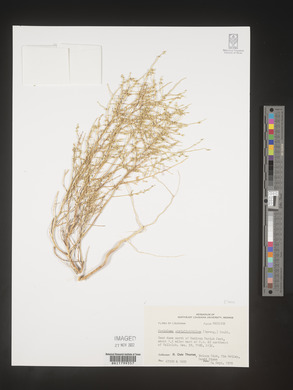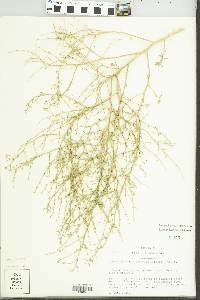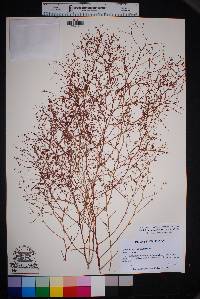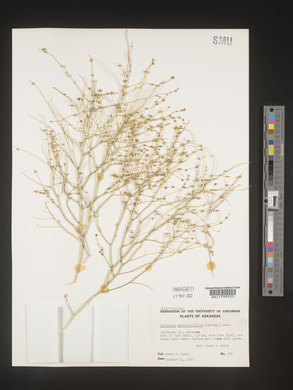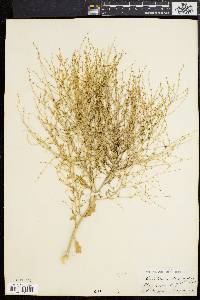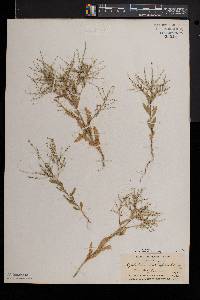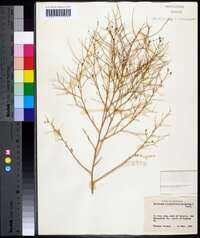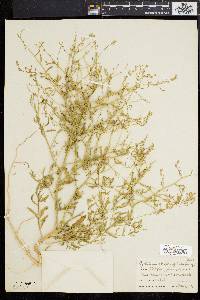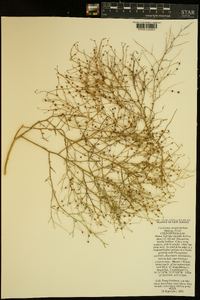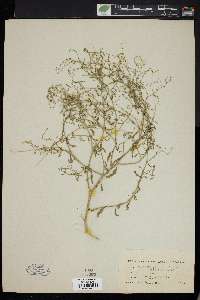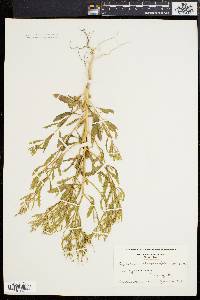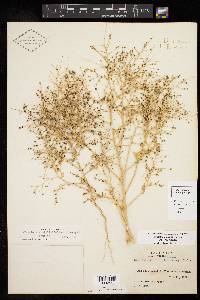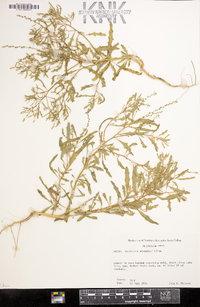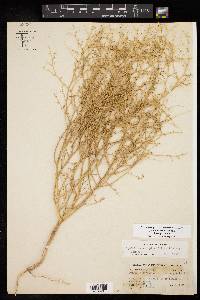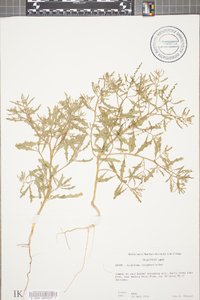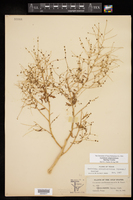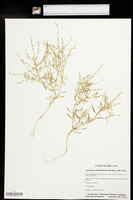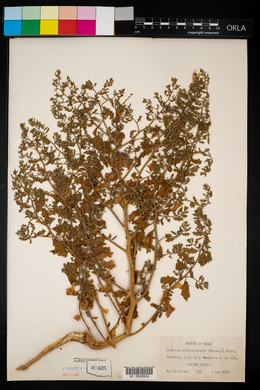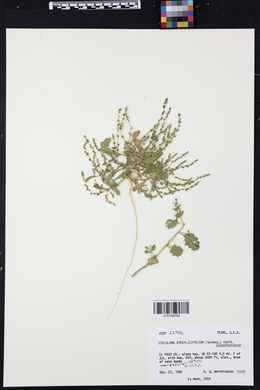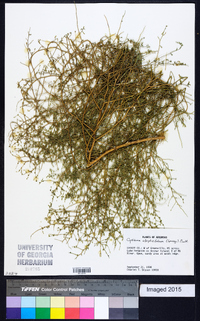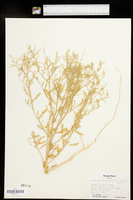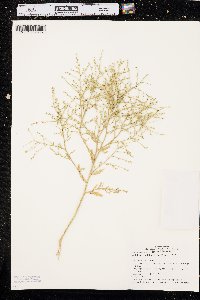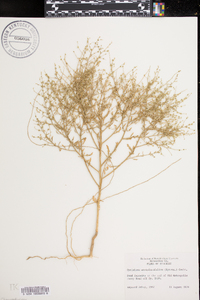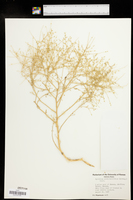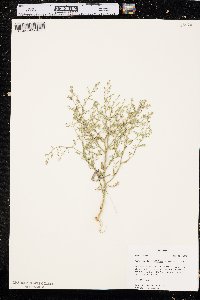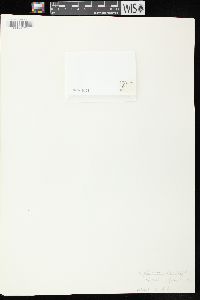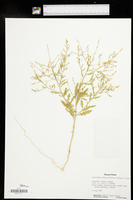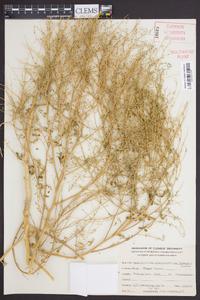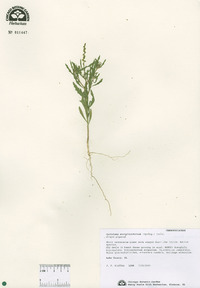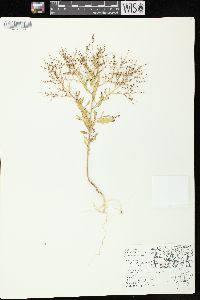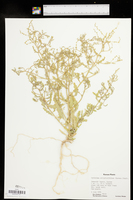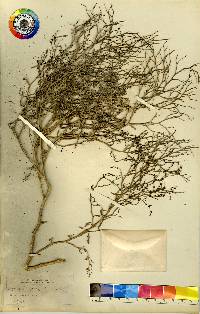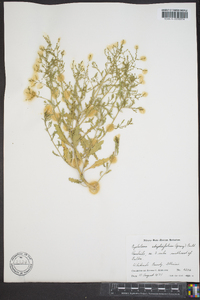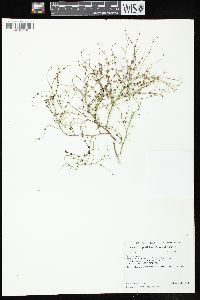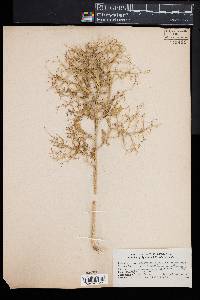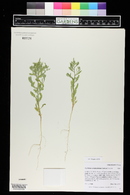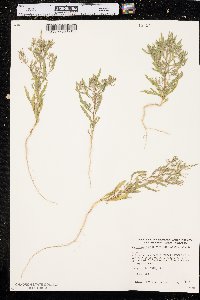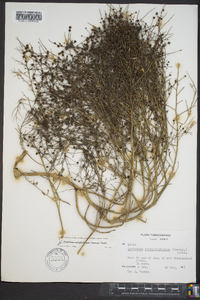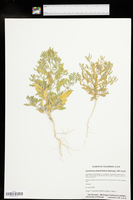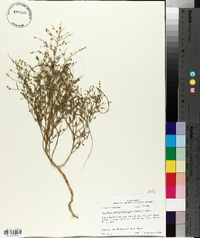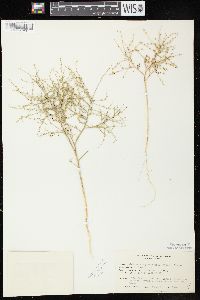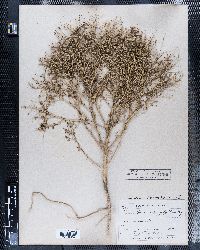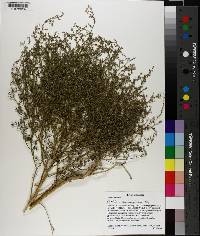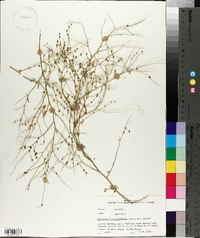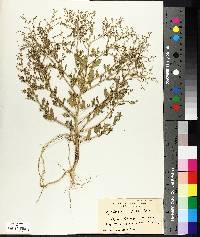
|
|
|
|
Family: Amaranthaceae
Winged-Pigweed
[Kochia atriplicifolia Spreng.] |
Stems 5-80 cm. Leaves: petiole ca. 2-15 mm or absent; blade 2-7(-8) × 0.5-2 cm, base cuneate, margin teeth acute or mucronulate. Perianths 2-4.5 mm diam. (including wing), ± tomentose, often becoming glabrous and reddish. Seeds 1.5 mm diam. 2n = 36. Flowering late summer-fall. Sandy soils, roadsides, waste places, disturbed and alluvial habitats, fields, deserts and prairies (obligate psammophyte); 0-1500 m; Man., Ont., Que., Sask.; Ariz., Ark., Calif., Colo., Conn., Ill., Ind., Iowa, Kans., Ky., La., Md., Mass., Mich., Minn., Mo., Mont., Nebr., N.J., N.Mex., N.Y., N.C., N.Dak., Ohio, Okla., Pa., S.C., S.Dak., Tenn., Tex., Utah, Va., W.Va., Wis., Wyo.; n Mexico; introduced casual in Europe and some other parts of the world. The original distribution of Cycloloma atriplicifolium may have covered mostly central parts of North America west of the Mississippi River. Current distributions indicate a pattern of expansion. It appears to be spreading in southern Canada, especially the prairie provinces, and in the southeastern United States. Occurrences have been reported in Idaho, Maine, Nevada, New Hampshire, Vermont, Virginia, and West Virginia, but specimens have not been seen for these states.
Annual herb 5 cm - 0.8 m tall Stem: upright, much-branched, hairy when young, becoming hairless with age. Leaves: alternate, short-stalked or nearly stalkless, 2 - 8 cm long, 0.5 - 2 cm wide, progressively smaller upwards, oblong egg-shaped to lance-shaped with a tapering base and pointed tip, coarsely wavy-toothed, hairy when young, becoming hairless with age. Inflorescence: a terminal, linear, interrupted spike of flowers which together form a larger, widely branched inflorescence (panicle). Flowers: bisexual (perfect) or female (pistillate), solitary or a few in the axils of small bracts, stalkless, greenish, becoming reddish, small, more or less hairy, becoming hairless, with no petals and five sepals fused to past the middle. Sepal lobes developing a membranous wing at maturity (see fruit section). Stamens five. Stigmas three. Fruit: one-seeded (utricle), enclosed in the persistent, incurved, now-winged sepals. Sepal wings horizontal, circular, and membranous. Wall (pericarp) loose and easily separable from seed. Seed horizontal, black, to 1.5 mm wide. Similar species: No information at this time. Flowering: mid-June to mid-October Habitat and ecology: Common in disturbed, sandy areas and occasionally found on the beaches of Lake Michigan. Also found in Black Oak savannas. It is often one of the first plants to grow in sandy areas left open by grading and excavation. Occurence in the Chicago region: native Etymology: Cycloloma comes from the Greek words cyclos, meaning circle or ring, and loma, meaning border. Atriplicifolium means "with leaves like plants in the genus Atriplex." Author: The Morton Arboretum Heil et al 2013, FNA 2004 Duration: Annual Nativity: Native Lifeform: Forb/Herb General: Annual herbs, 5-80 cm tall; stems erect, much branched, especially in the inflorescence; herbage villous or tomentulose, becoming glabrous at maturity. Leaves: Alternate, sessile or on petioles 2-15 mm long; blades oblong to lanceolate, 2-8 cm long, 0.5-2 cm wide, with sinuate-dentate margins. Flowers: Inconspicuous, in diffusely branched panicles, the flowers solitary or few in the axils of short bracts; flowers bisexual or pistillate; perianth segments 5, connate to above middle, 2-5 mm diameter, more or less tomentose, often becoming glabrous and reddish. Fruits: Utricle encircled by a wing made out of the persistent, connate perianth segments; pericarp membranous, free. Seeds horizontal, plumply lenticular, 1.5 mm, black, smooth or indistinctly sculptured. Ecology: Found in sandy soils, roadsides, waste places, disturbed and alluvial habitats, fields, deserts and prairies, below 5,000 ft (1524 m); flowers June to October. Distribution: Sask. to Quebec; south to CA, AZ, NM, TX, and LA. Notes: Like its relative tumbleweed, this weedy annual has a many diffusely-branched stems which create a roundish ball of plant that looks like it-s ready to break off at the root and tumble across the landscape. Unlike tumbleweed, it has small, oblong, toothed leaves that are neither succulent or spiny. The fruiting structures are similar to tumbleweed, with an achene surrounded by a "skirt" of connate bracts. FNA claims this species to be native to the Great Plains, as there is evidence of recent range expansion outward into the rest of North America. However, it does appear to have been present in the Southwest for some time, as there are documented ethnobotanical uses by the several southwestern tribes. It is a weed of disturbed habitat and will only grow in sandy soil. Look for it in Chenopodiaceae in older texts; that entire family is now considered to be part of Amaranthaceae. Ethnobotany: Seeds were prepared and eaten as a grain by the Hopi, Zuni, and White Mountain Apache; used medicinally by the Hopi to treat headache, rheumatism, fever; used by the Hopi to make a pink dye; used ceremonially by the Zuni. Etymology: Cycloloma is from the Greek cyclos, a circle and loma, a border, referring to the encircling calyx wing; atriplicifolium means that its leaves resemble the genus Atriplex. Synonyms: Kochia atriplicifolia Editor: AHazelton 2015 sinuate-toothed, the lower to 8 cm, the upper progressively reduced; all terminal branchlets floriferous, forming spikes 2-6 cm; fls sessile; mature cal 3-4 mm wide; seeds 1.5 mm; 2n=36. Dry or sandy ground, often as a weed; Man. to Ind., Ark., and Tex., w. to Utah and N.M., and occasionally adventive eastward. Gleason, Henry A. & Cronquist, Arthur J. 1991. Manual of vascular plants of northeastern United States and adjacent Canada. lxxv + 910 pp. ©The New York Botanical Garden. All rights reserved. Used by permission. From Flora of Indiana (1940) by Charles C. Deam This plant occurs mostly in sand ballast along railroads and in the dunes. Characteristic in late summer. ...... Indiana Coefficient of Conservatism: C = 2 Wetland Indicator Status: FACU Diagnostic Traits: plants usually white-tomentose; leaves coarsely and irregularly sinuate (somewhat holly-like), with sharp-tipped lobes; fruits horizontal, completely encircled by a connate wing; styles 3. |
|
|
|

